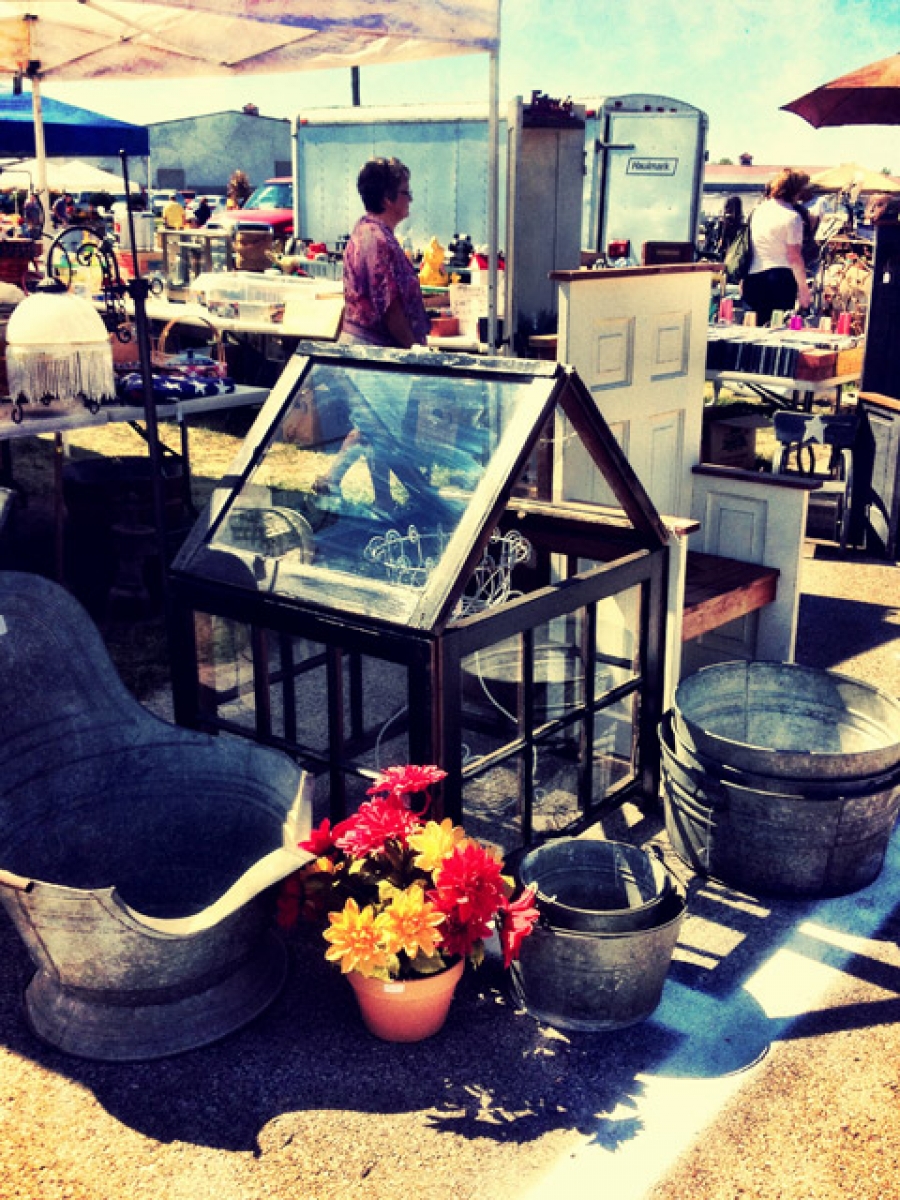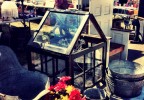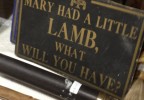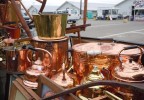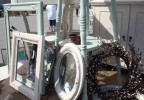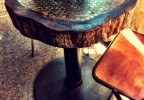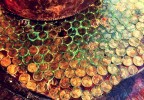These shows are often where many in-the-know shoppers, interior designers, architects, builders, stylists, and collectors from all over the world converge to shop and score fascinating, original, and rare pieces, both for their clients and personal collections.
In mid-September, I joined over 1,500 exhibitors at the renowned Springfield Antique Show and Flea Market. Overall it was a great experience. Not only did I manage to sell a few of my own reclaimed pieces to some really lovely and enthusiastic buyers, but I also found a ton of inspiration as I wandered from booth to booth, surrounded by everyone’s funky old junk and artisan goods.
By the time my truck exited the fairground gates, it was simply bursting with beautiful reclaimed building materials and vintage collectibles that are destined to keep me busy in my studio all through the winter months ahead.
Growing up surrounded by this kind of culture has taught me a few lessons about how to work really great deals and how to score some one-of-a-kind pieces for my home at amazing prices.
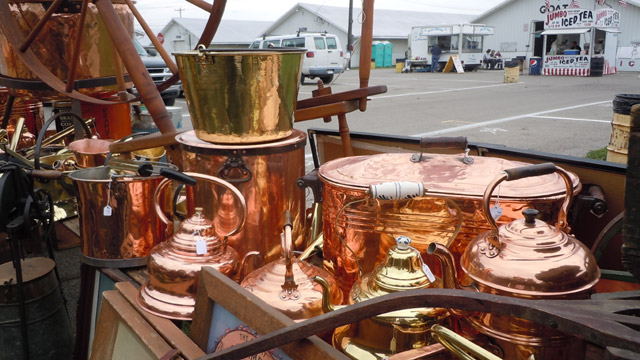
Here are some tips and tricks that I have picked up over my years of perusing the antique shows and flea markets of the rural Midwest that will help you have fun and bring home the goods at these fun and unique shows.
Be P{Re}pared
During the summer, fresh air flea markets often take place outdoors, anywhere from parking lots, fairgrounds, drive-in theatres, garages, or country farms.
Before you set out for your local flea market, be sure that you are equipped with the basics to make it through a long day in the sun.
-
Dress light and be comfortable. Wear layers to peel away as the day gets warmer. Comfortable, broken-in, beat-up shoes are an absolute necessity for your survival at the flea market.
-
Carry a big bag to tote your small finds around as you peruse the stands.
-
Flea marketing can be a dirty business, and so can the stuff that you’ll be handling. A few wet wipes tucked into your purse can be a lifesaver – at most flea markets, you’ll be lucky to find a proper bathroom, let alone a sink with running water.
-
Bring a camera. I always take photos of the things that inspire me or make me giggle. I often come across elaborate displays, silly folk pieces, and artisan furniture at the markets that inspire my work.
-
Note where a cool item is located if you haven’t decided whether to purchase it and want to walk around and think about it for a while. Taking photos with your camera as well as taking note of the dealer’s booth number will help you find your way back later.
-
Always come prepared with cash. Be sure to bring small bills. All of the vendors are wheeling and dealing all day long, and you can more effectively bargain if you have the correct change. Many dealers will accept personal checks for larger items – just make sure that you have your driver’s license handy.
Get To Know The Dealers
Many dealers come to back to the same shows month after month throughout the season. If you find a dealer whose style you dig but they don’t have exactly what you’re looking for, ask them! They may have a shop, warehouse, or garage full of goodies that didn’t make it to the show – it’s possible that they might have exactly what you’re looking for.
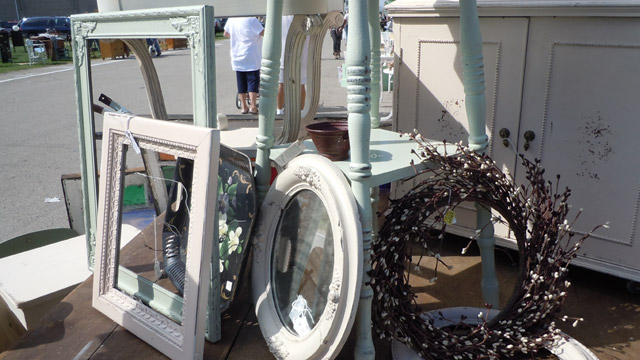
Bargaining
When you do fall in love with a funky piece, and it’s time to get down to brass tacks, don’t be afraid to wheel and deal.
When you’re looking to bargain, the most important thing to remember is to learn more about what you are purchasing and to be polite. Ask the dealer what they know about the piece that you are interested in, where it came from, how old it is, etc. Use these opportunities to glean information from the vendors, and become a better educated buyer.
Most dealers are willing to work with you on their marked prices, and will generally drop the price by as much as 20% for the right person. When I’m trying to get a good deal, I usually ask a vendor “Would you consider taking $_ for this piece?” or “What’s your best price?”
Even if your offer is a little low, they’ll most likely hit you back with a middle ground, and you can settle the score from there.
Shopping
There are two schools of thought about the best time to shop at a flea market.
Many pros will arrive at the break of dawn on the first day of a show to get an early bird’s peek at everything that is for sale. If you’re looking for something specific or something that is hot or trending, an early arrival is the way to go.
I personally wait until the final day of a flea market before making my rounds. Many dealers will drive hundreds of miles to set up their booth at a large flea market; repacking all of their unsold wares at the end of a long weekend tends to be a daunting task. I find that most sellers are more willing to make thrifty deals at the end of the show.
Most dealers are more than happy to let your store your goodies at their site until you’ve finished your shopping for the day. Make notes (mental or otherwise) of what you bought and where to pick it up on your way back to the car. Rather than making 20 trips back to your vehicle throughout the day, find a friendly dealer in a good location and build up a pile of your larger items.
